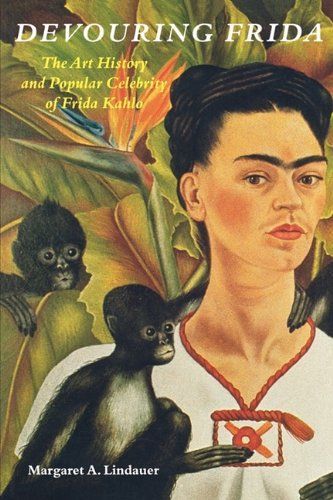
Devouring Frida The Art History and Popular Celebrity of Frida Kahlo
Beginning in the late 1970’s Frida Kahlo achieved cult heroine status less for her richly surrealist self-portraits than by the popularization of the events of her tumultuous life. Her images were splashed across billboards magazine ads, and postcards; fashion designers copied the so-called “Frida” look in hairstyles and dress; and “Fridamania” even extended to T-shirts, jewelry, and nail polish. Margaret A. Lindauer argues that this mass market assimilation of Kahlo’s identity has consistently detracted from appreciation of her work, leading instead to narrow interpretations based on “an entrenched narrative of suffering.” While she agrees that Kahlo’s political and feminist activism, her stormy marriage to fellow artist Diego Reviera, and the tragic reality of a progressively debilitated body did represent a biography colored by emotional and physical upheaval, she questions an “author-equals-the-work” critical tradition that assumes a :one-to-one association of life events to the meaning of a painting.” In kahlo’s case, Lindauer says, such assumptions created a devouring mythology, an iconization that separates us from rather than leads us to the real significance of the oeuvre. Accompanied by 26 illustrations and deep analysis of Kahlo’s central themes, this provocative, semiotic study recontextualizes an important figure in art history at the same time it addresses key questions about the language of interpretation, the nature of veneration, and the truths within self-representation. Ebook Edition Note: All images have been redacted.